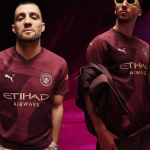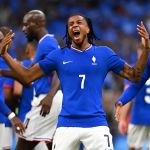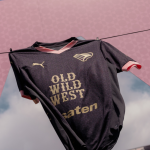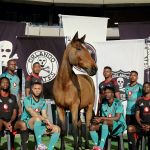
How are football sponsorships changing?
From Nike's new business model to the adidas' vision
March 1st, 2024
Lamine Yamal, the 2007-born Blaugrana talent, is just the latest in chronological order to switch from Nike to adidas. Shortly before, the same fate had befallen Enzo Fernandez of Chelsea, who was paid over 100 million pounds last summer. They are the latest footballers to have ended their sponsorship contract with Nike and subsequently chosen a new technical sponsor. Yamal has already been announced as the new face of adidas, the direct competitor of the Swoosh in the football sponsorship market and one of the many brands cashing in on Nike's strategy. Indeed, of the many top-tier athletes who have terminated their contracts with the Beaverton company in recent seasons, not all have chosen the Three Stripes brand as their future destination.
Consider Sergio Ramos, who became a brand ambassador for Mizuno in 2022, or Under Armour, which after sponsoring Memphis Depay, Trent Alexander-Arnold, and Ollie Watkins in recent history, is focusing on Eddie Nketiah and Antonio Rüdiger as Main Testimonials. Or New Balance, which has made a strong push into the English market by signing two national players like Raheem Sterling and Bukayo Saka in addition to the future talent of Real Madrid and already a style icon at home, Endrick, while boasting only two names in Serie A, namely Wojciech Szczęsny and Timothy Weah. But also Skechers, a brand that in August 2023 selected Harry Kane as a profile to debut in the world of football. Perhaps the stellar €110 million contract tempted the English striker, but the operation of the US brand shows how the "boot scene" is clearly changing, witnessing both the inclusion of smaller brands and the introduction of new business models, such as Nike's.
What Nike is Doing
Nike's choices suggest that, in all likelihood, the intention is to gradually reduce its roster of players. The ultimate goal could be to aim for a generational turnover: it's no coincidence that most of the athletes who have left Nike in recent months were born from 1993 onwards (Kane, Neymar Jr., Casemiro, Lacazette, Ramos), while Haaland, Foden, Mbappé, and Musiala, generational talents under 26, are among the immovable profiles. By focusing on carefully selected superstars, Nike positions itself by ensuring at least one talent per European championship. In addition to these names, Nike has also sponsored Lautaro Martinez in Serie A, undoubtedly the most dominant player in the first part of the Italian championship. By concentrating on a smaller number of athletes (albeit of the highest caliber), Nike could provide a breath of fresh air to the entire football world by working on various projects, such as the recent launch of 14 new kits for NSWL clubs.
Similar to what has been done in recent years by removing its products from the wholesale market and pushing for direct distribution, it seems that Nike has modeled the same approach on sponsorship strategies. Fewer external outlets and more intellectual property to manage vertically, such as the kits of a private league closed on the NBA, NFL, and NSWL model. A model that did not yield the expected results in the last projection for fiscal year 2023, forcing the Beaverton company to hastily backtrack, but one that seems to continue with athletes and clubs. It's no coincidence that even Tiger Woods, one of the most recognizable faces of the Swoosh, chose to launch his own brand instead of continuing with the sponsor that accompanied him practically throughout his career.
To Each Player His Boot
This transitional period for Nike - whose impact on future changes only time will reveal - cannot fail to arouse more than a few emotions in the hearts of those nostalgic for a football now past, who have always almost automatically associated brands (or boot models) with players. Even before the advent of signature boots, football boots were already able to merge with the identity of players - or at least with their playing style. This is the case with adidas, which exploited the footballing skills and charm of the image of David Beckham to make the rise and affirmation of the Predator Touch model legendary. Or as done by Nike itself, which on the occasion of the 1998 World Cup created the Mercurial model in the yellow, blue, and gray color scheme for Ronaldo Nazario. In that case, the Swoosh was looking for a player who had the right qualities to wear the boot, both technically and stylistically, to turn it into a cult. And we can say it worked rather well.
But to the examples of R9 and Beckham, many others can be added, from Baggio, Weah, and Gianluca Vialli with the Diadora Classic Pro to Rivaldo's Mizuno Morelia. Iconic commercials also contributed to accentuating this fascinating bond between player and boot, such as Diadora's Leoni or adidas' Earn Team from 1994, which instead of focusing on the image of a specific player aimed to highlight the features and concept of the boot, leaving viewers the freedom to associate them with a player. The climax is reached with Nike's The Cage ad, with which the brand managed to communicate how the association of boot and player is a more serious matter than some might think.
A Scenario for the Future
The end of the Messi-Ronaldo duopoly will also mean the end of the adidas-Nike duopoly, and a clear change of field compared to the last two decades. Of course, the German company can count on a prestigious roster in terms of quality and quantity of players available, but also thanks to a product that, as seen with the great return of Predator, among others, is not being caught unprepared. Despite its reset operation of many contractual positions, Nike has strongly focused on Haaland and Mbappé, two very different profiles except in their unreal scoring ability, paying very high figures to have them and snatch them from the competition. A choice not quite in line with Nike's recent history, which has always relied on its appeal to lower the fees of its talents.
But on the other hand, competition is fierce, and adidas itself is considering a Jordanesque plan for its superstar Jude Bellingham, complete with a stylized logo of his now famous celebration. Bellingham's figure is strong enough to attract cross-generational attraction; it's certain that having the ability to connect his playing style to the figure of Zinedine Zidane (still strongly associated with the Three Stripes) is a major strength on which almost no sportswear brand can leverage. The stereotype of the Blancos' number 5 with sublime class, to Zizou precisely, a prodigy who seems to come from another galaxy in terms of attitude, especially when compared to his peers.
In a new generation where the habit of creating advertorials capable of influencing the market seems to have been somewhat lost, the choice of talents becomes even more crucial as their profile off the field is as important as their performances on it. And this is having a strong impact on brand strategies. If Nike chooses talents based on how they can interpret the brand's chosen message - usually Just Do It -, adidas prefers athletes who can enhance the product while companies with less brand value choose stronger faces to position their brand through their fanbases. In all likelihood, the sponsorship shuffle will continue unabated in the coming months, with major sportswear players seeking to compose their athlete teams as best as possible. And there will also be those who will have to deal with their fate, like PUMA: who will be up to inheriting the weight of an icon like Neymar Jr.?












